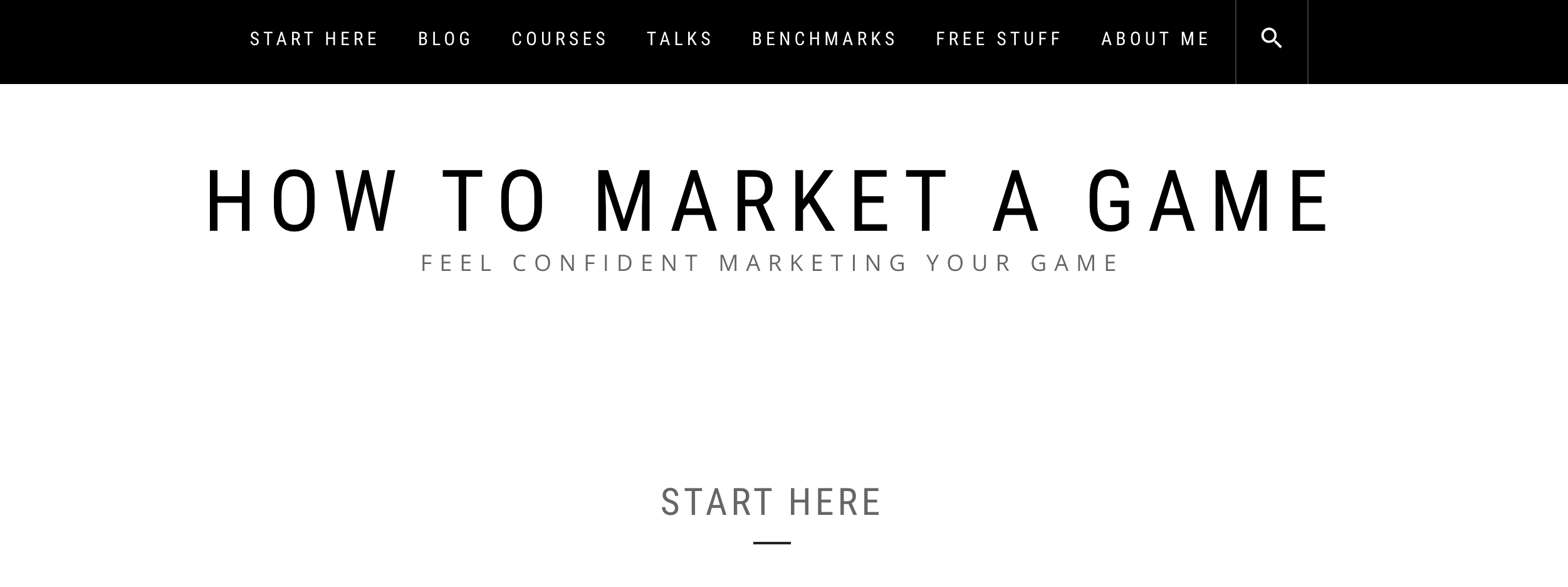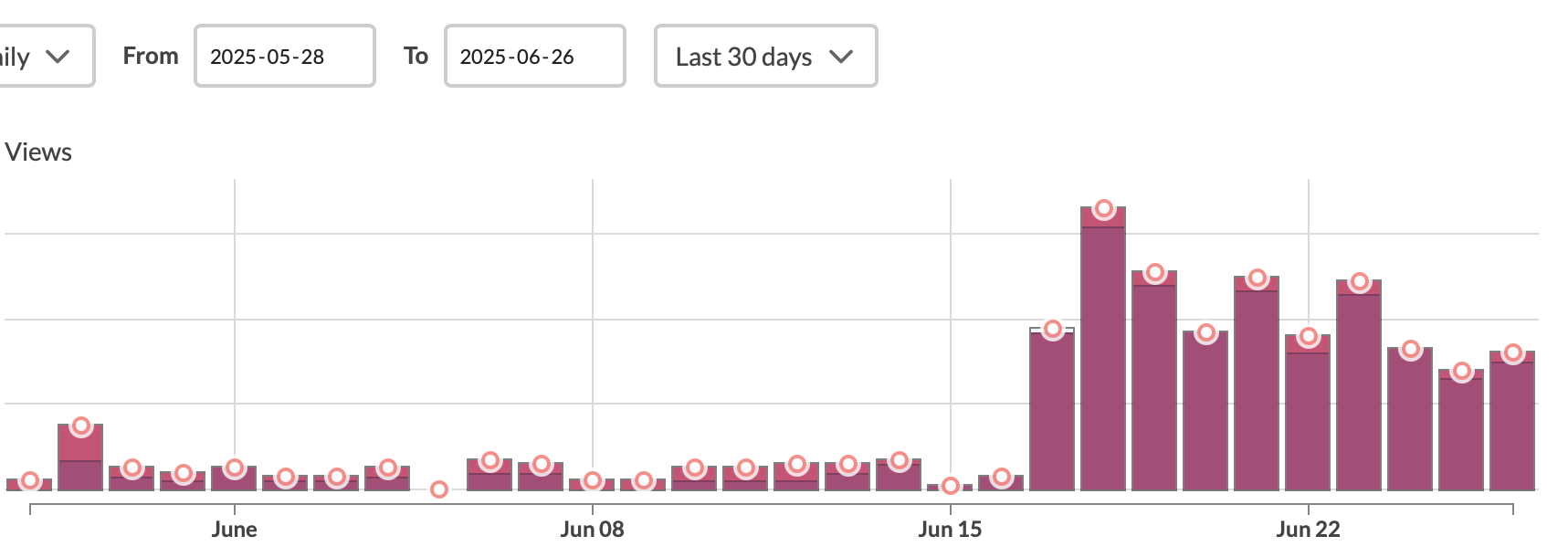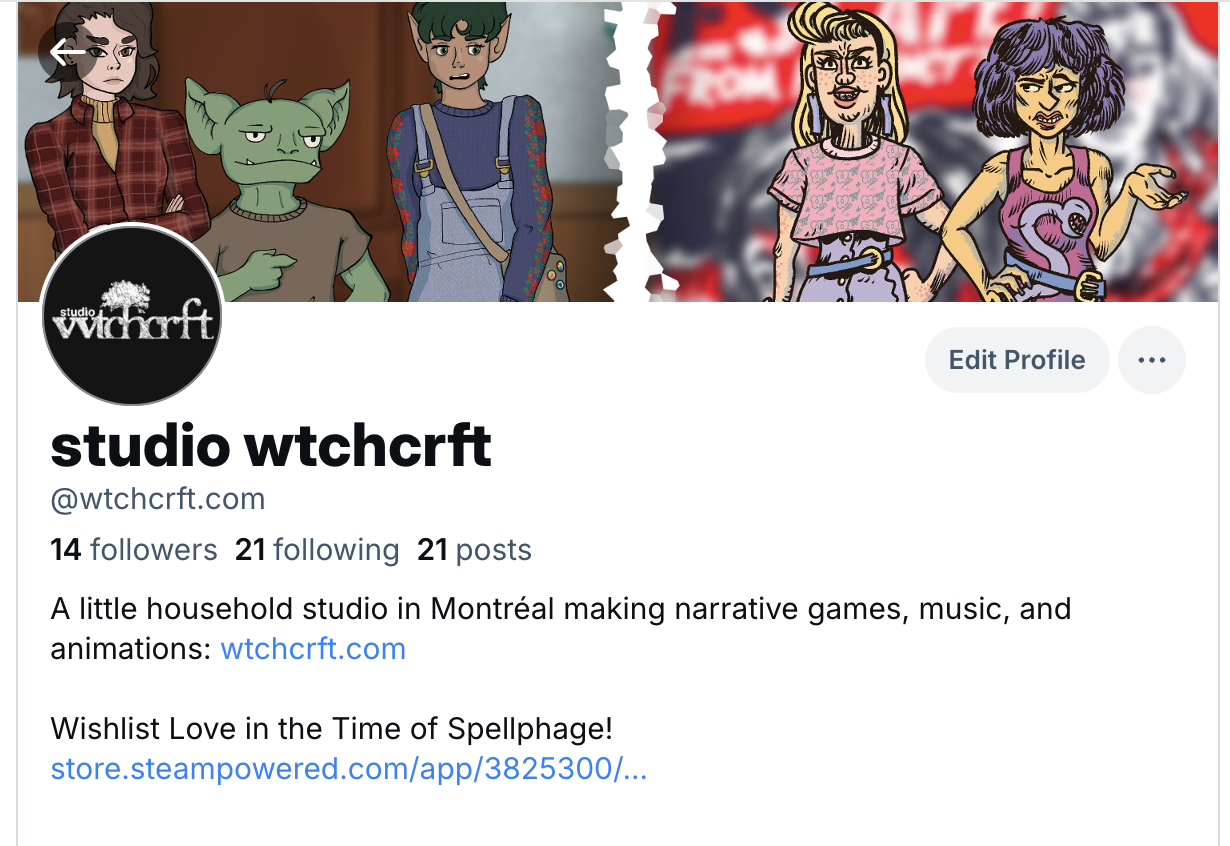A beginners journey through indie marketing
From game design to game marketing. A near fully entwined pair. With the amount of games published year over year, marketing has become less optional than ever.
So I’ve been learning how to market.
I can’t say I love it, nor can I say it feels like a science. Modern marketing feels like Tweeting to zero followers and hoping someone stumbles by.
But I’ve been spending time in marketing places and trying to learn from those who don’t see it as a nebulous black box.
How to Market a Game
If you search for anything concerning marketing a video game you’re going to quickly come across Chris Zukowski. Over the last few years he’s become the expert on marketing video games and Steam trends. If you see people doing videos on YouTube about what genres of games to make and which ones to avoid, they are likely pulling from the work that Chris has done.
He has a website where he blogs regularly, he runs a Masterclass to get you marketing faster, he runs an active Discord, and he really seems to constantly be doing talks all over the place.

The thing I really like about Chris’s content is that he gives the vibe that he really wants people to succeed with their game. He shares so much data, making it publicly available, saving individual marketers and researchers so much time.
It’s been really interesting to watch his talks going back a few years and into the present as it’s really helped make it clear that while there are trends there are also some strong consistencies too. Like rogue-like deck builders really look like they’ll continue to sell if they’re done well, and that a good Steam page is probably better than any cost-free marketing you might be doing.
The HTMAG Discord feels a little more intense than a lot of Chris’s talks. People there are trying to figure out the best platforms and pricing and techniques for paid ads and that’s something I struggle to wrap my head around. There’s so much data and tracking. As someone who hates being advertised too it also takes a little bit of reflection to consider what it would mean to run paid ads. Especially when understanding that visibility is so precious and this is a way to reach people you likely never could on your own.
I don’t feel prepared technically or knowledge-wise for running paid ads. Maybe if we had a game that felt like it had proof of market and mass appeal, but it's risky with smaller, more artsy games.
Itch.io
So what I’ve written so far has been very Steam focused.
But what about Itch.io?
We first launched our games on Itch because that was where the game jams were happening and because it’s also just way easier than going through all the steps that Steam requires. Steam can honestly take multiple days to set up before even submitting it for review to get permission to go public.
There is less shared knowledge out there about marketing for Itch. Some things seem to be the opposite from Steam: On Itch you want to use the underused tags so that you are more likely to surface in less over populated spaces. While on Steam you want to have common tags so that popular games show up in your “Similar to” section on your games page. Wishlists are everything on Steam while people adding your game to their Collection doesn’t really seem to bring any tangible benefit to you.
We have stumbled upon one good trick for increasing views, giving your game a price but have it on sale as free, this will place you instantly into a smaller cohort of games. Our daily views took off after this, having made no other changes.

I was expecting it to drop off after that first peak but it really seems to be at a new regular level for a while. Not sure how long it can last but it was super interesting to see the instant impact of the change.
What marketing we did
With Spellphage as our first game and our first real dip into the world of game publishing we went into marketing fresh faced and bleary eyed from having spent the last month game jamming.
We watched one or two Chris talks and then got to it. We aren’t people with big online social followings, hell, my wife works hard to exist on the internet as little as possible. And with the fall of Twitter I lost a lot of old connections. So we were kind of starting from zero.
We didn’t even have our studio website or studio Blueky account yet. So our reach was limited.
A lot of our early promotions were to our friends. Then we expanded to the visual novel Discord server that was hosting the original game jam that started us on this journey. I wrote some BlueSky posts once we had our first day of the story finished. Then made a Tumblr as we heard that it had a more active visual novel audience.
None of this really got us... anything substantial.
So we kicked it up a small notch and my wife started posting in subreddits that accept promotion posts. These did lead to some traction and we were able to see from the Itch incoming links that a lot of our views came from Reddit.
As Escape from Precinct 27 approached completion we had set up our website and our BlueSky. These were still places with no traffic so they weren’t going to help us reach people but it did mean I felt more comfortable talking exclusively about our games with every post.

But other than that nothing had really changed, we went through the same cycle of BlueSky, Reddit and Tumblr posts about the game. Reddit once again being the obvious winner. But then something interesting happened. We got 2 unsolicited YouTube streams. One a silent playthrough and one which was live streamed with a full read through.
I’ll admit, I thought this was it, I thought 2 unprompted streamers was a sign that we were entering a new level.
This didn’t turn out to be true. We got a few extra views, befriended a streamer who we sent keys to share with his viewers. But Precinct didn’t end up taking off that much more than Spellphage. A reminder that you really need to be hustling on the promotion front. But an interesting thing that it did confirm was Chris Zukowski’s consistent messaging that “marketing starts the moment you chose your genre”.
I’m one hundred percent sure that we only got videos for Precinct 27 because it’s marketed as a horror game. Horror is so popular that there are way more streamers interested in it. So much so that the one who played ours seems to just grab newly launched games on Itch tagged horror nearly every day. So the choice to make a horror game opened doors that were never available to Spellphage.
All this promotion was done before we got our Steam page for Spellphage. Which is honestly, a pretty big game changer.
Steam
Now Steam is a whole other beast. As I said at the start, a lot of our learning came from the How to Market a Game material and this is focused on marketing for Steam. It’s the largest video game storefront and it offers up a huge amount of data to analyze and dissect.
All our marketing is now focused on getting Wishlists on Steam. So much prediction around success and failure is calculated on how many wishlists you can get before you launch. Certain amounts of wishlists and wishlist speed is also what allows you to get more promotion on Steam itself.
But getting our game on Steam has opened another new marketing door: Steam Festivals. Which brings me to another big take away from the HTMAG Discord: The Spreadsheet.
The Spreadsheet
I don’t think anyone else is calling this spreadsheet The Spreadsheet, but it feels so valuable to me. The spreadsheet is a collection of game festivals, their submission window and a few other notes on the event. This is geared towards festivals that have been judged “worthy” so none that should be a complete waste of time for anyone.

This is a big spreadsheet and I like the way it’s been made to have lines change colour based on approaching deadlines and open submissions, making it super easy to quickly scroll through. I was able to find 3 festivals that felt like Love in the Time of Spellphage would fit into and apply to them within just a few hours. I likely never would have heard about these festivals otherwise. Highly recommend.
I now have my own spreadsheet of festivals that fit our games and multiple Google forms that I need to fill out.

The only reason we got our Steam page out recently was because there was a festival coming up that seemed perfect for Spellphage. The deadline was soon though, we had only 13 days to get our Steam page up to be able to submit to even be considered.
You might be unsurprised to hear that a lot of game development (including marketing) involves crunching. I wouldn’t say that we fully crunched on getting the Steam page out (Work after 10pm? I could never!) but it was an intense focus for a weekend. If it wasn’t for the festival deadline, we probably would have put off the Steam page for a few more weeks. We had the same thing happen to our website. When applying for QGCon I wanted to have a website for organizers to see when reviewing our application. So I pushed working on the website for that application deadline.
It’s a strange way to progress, jumping from one external deadline to the next. But we’ve been lucky so far. None of these deadlines have overlapped. We were lucky enough to be able to shift our focus to the newest deadline without compromising our other goals. Some people might hate it, but honestly I love working towards a deadline, at least realistic ones.
Other resources
So while How to Market a Game videos have dominated my research time, there have been a few other talks that got my attention and got me thinking about marketing in different ways.
Indie Game Marketing Tips on YouTube is a channel that, on paper, I would have zero interest in. As I mentioned in the post about learning game design, I love a sharply edited YouTube video with graphics and video clips. But Indie Game Marketing Tips? This is literally a guy sitting in front of a benign wall talking directly to the camera. Not a single visual graphic to spice things up. He somehow ended up in my YouTube recommendation algorithm and I hit play because I was intrigued by the title.
It was one of those talks that just kind of ringed true to me, it made sense. It also happened to be super relevant to a conversation I had had with my wife just a day before on how we wanted to approach making games. This guy has under 1000 views on his videos and I guess it could be because of his extremely basic video format but it’s a little hilarious to see that from someone marketing themselves as a marketing pro. But his videos are on the shorter side (under 30 minutes) and he talks really fast which is something that helps hold my attention (I often watch videos at 1.5 speed but I don’t need to turn this guy up at all lol). So I plan to go through his last few months of videos.
Conclusion
There is still a lot for us to learn how to play this marketing game. Our first two games were made within a month each, that’s not a long time to market a game. Common knowledge is to have your Steam page up for at least 3 months before launch to have time to gather wishlists. We had no Steam page and launched our games in 30 days, so of course the early marketing window was tiny.
Our current focus is to get Spellphage into as many Steam festivals as possible to keep fishing for Wishlists. At the same time we’ll be drip marketing our brand new, in-progress game. Those drips being what you’re reading right now, ah ha, I got ya.
We’re giving ourselves multiple months for our next game (gasp! So much time!) and I’m really hoping to document a lot of that process. Both for archival purposes but also because being able to share our process and maybe even some tips or tricks feels like an honest way of both marketing but also connecting with other devs and gamers. So I hope to keep writing devlogs documenting our progress.
We’re also going to be showing Spellphage in-person at a conference here in Montreal in September. This will be a brand new experience for us and hopefully a good place to get feedback and maybe even look for possible future studio coworkers.
We haven’t heard back from any of the online festivals yet, so we don’t know if we’ve gotten into any of them. But if we do I’ll do a follow up marketing post to share any impacts a festival has on wishlists!
